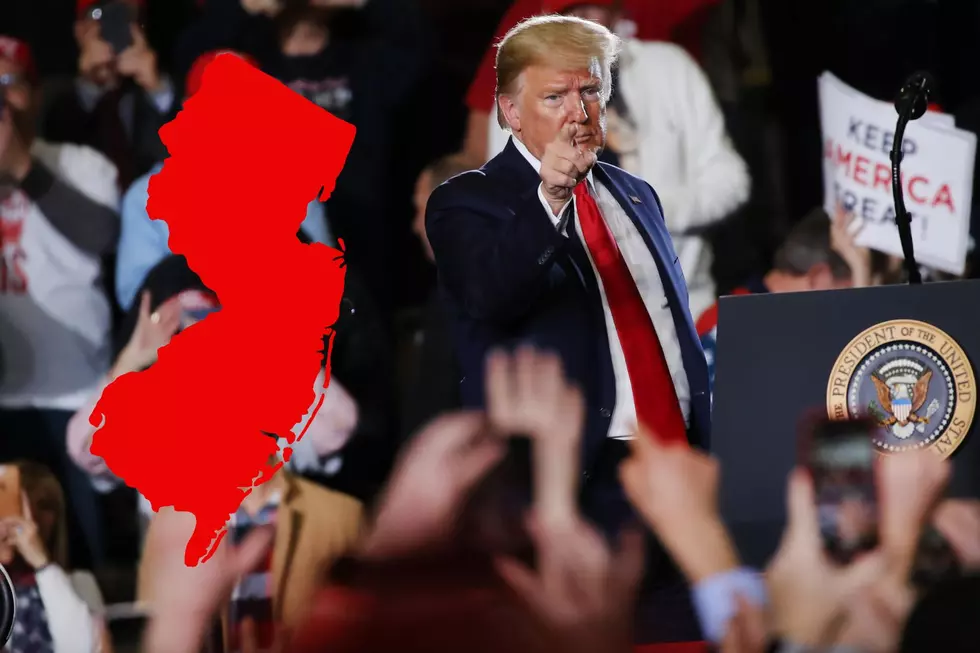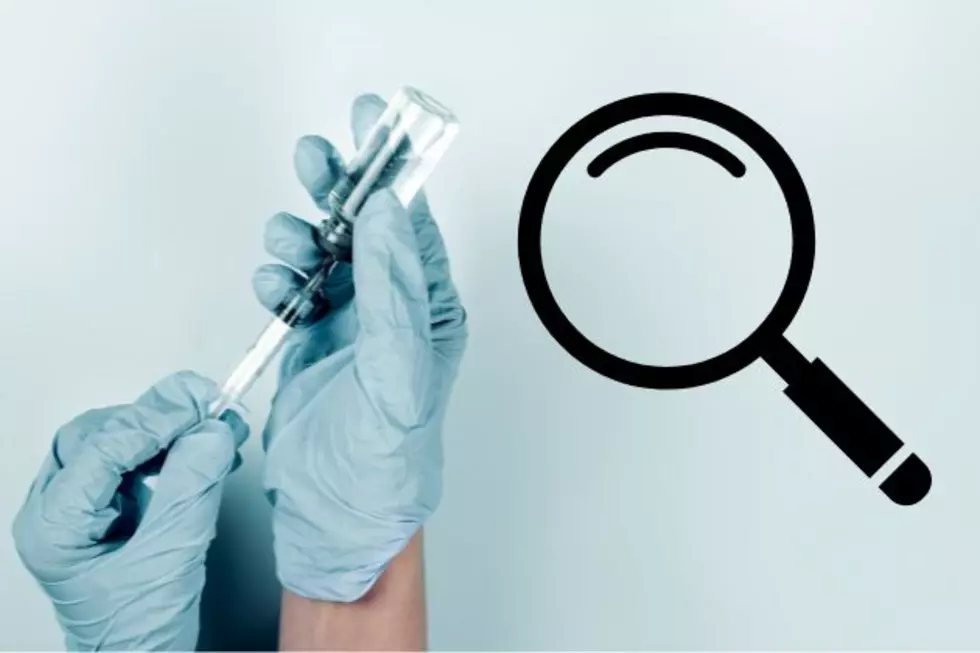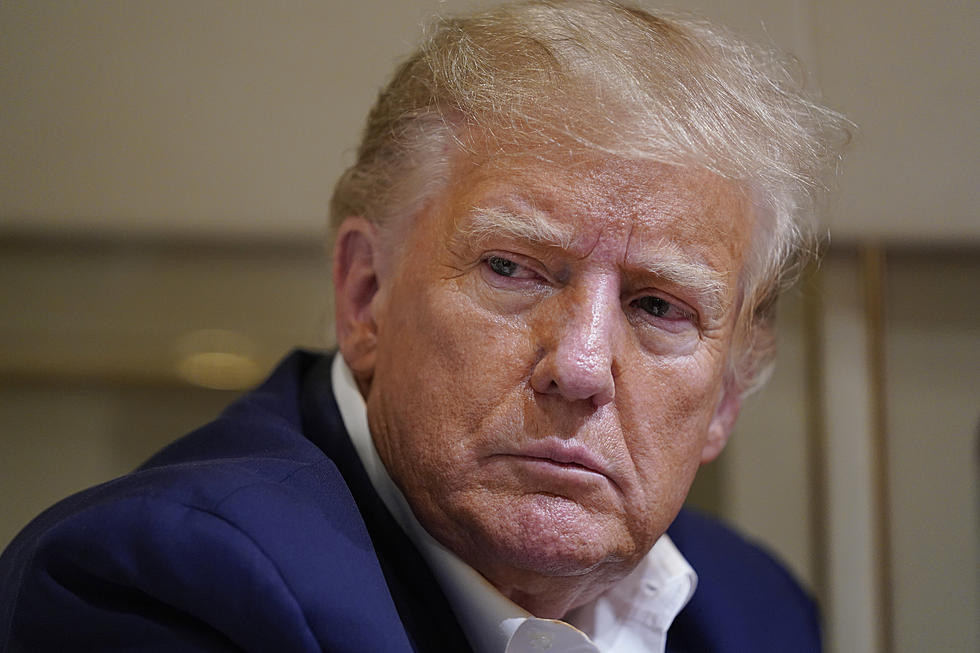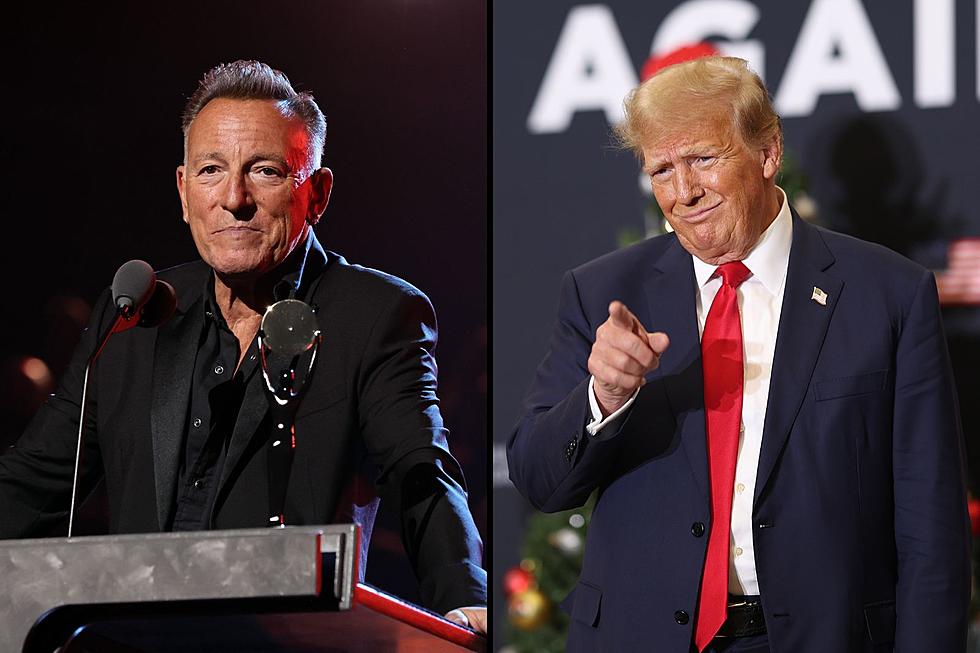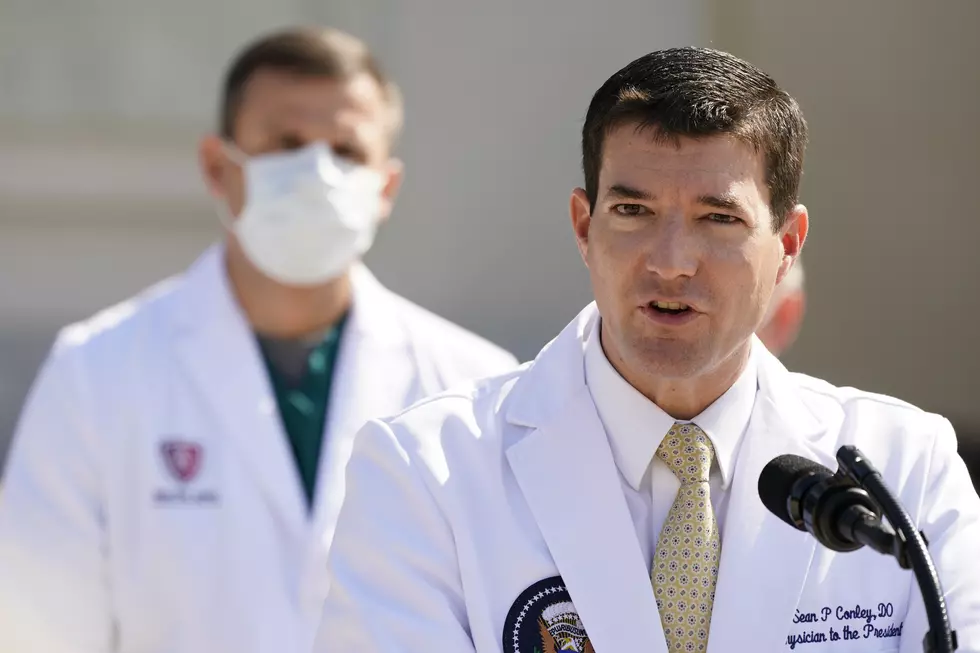
Trump docs leave open plenty of questions about his condition
President Donald Trump’s blood oxygen level dropped suddenly on Saturday, but he “has continued to improve,” the White House physician said Sunday, suggesting that Trump could be discharged from the hospital where he's being treated for COVID-19 as early as Monday.
Navy Cmdr. Dr. Sean Conley sought to clarify contradictory statements and confusion about the president’s condition on the steps of Walter Reed National Military Medical Center, where Trump has been treated since Friday.
President Trump announced he had the virus late Thursday, hours after attending a fundraiser in Bedminster. The White House has already confirmed Trump knew just before leaving for that event that his close adviser, Hope Hicks, had tested positive for the virus. Hicks had traveled with the president this past week, including to Tuesday's presidential debate against Joe Biden, where moderator Chris Wallace has said the First Family declined to wear masks required by the venue.
Hicks' diagnosis was not announced by the White House until after it was reported by Bloomberg, and attendees of the Bedminster event say they were not advised of it.
The CDC recommends contact tracing for any individual within 6 feet of an infected person for at least 15 minutes. It says those without symptoms and testing negative should still quarantine for 14 days from their last exposure.
Conley initially suggested that Trump was 72 hours into the diagnosis — which would mean that he was confirmed infected Wednesday. Conley later clarified that Trump was administered an accurate test for the virus on Thursday afternoon.
Conley still hasn't haven't provided an exact timetable that would clarify when exactly the president — who is tested frequently — had indications he was ill, or most recently tested negative. But Friday, White House spokeswoman Kayleigh McEnany said the president received his positive result about an hour before announcing it late Thursday night.
When pressed by a reporter to clarify when Trump had learned of his diagnosis Saturday, Conley said, "Thursday afternoon, following news of a close contact, is when we repeated testing and given kind of clinical indications that a little bit more concern and that's when late that night we got the PCR confirmation that he was."
He hasn't said when exactly the president first developed symptoms that prompted the "repeated testing."
Note: An earlier version of this post did not include McEanany's earlier statement, issued before Conley's statement about "72 hours" opened up more confusion about the timetable. An earlier version of the headline on this post also didn't account for McEanany's earlier statement.
Speaking to multiple media outlets, attendees there said most people had only very brief contact with the president, and social distancing was practiced for most segments of the event. An ABC report quoted attendees saying that when Trump posed for photos with some attendees, event staff, campaign staff and Secret Service members all wore masks.
Questions on President Trump's condition
Conley's statements and others Sunday added new layers of confusion to the president's health status even as he sought to clarify contradictory statements from the day before.
Conley acknowledged he was trying to downplay the severity of the president's condition the day before.
They day prior, Conley did not give a precise answer to repeated questions by reporters about whether Trump had ever been on oxygen during the week, saying only that he had not been on oxygen Friday and Saturday. The Associated Press, however, learned from a White House source that Trump had been administered oxygen at the White House before his admission to Walter Reed Military Medical Center Friday. White House chief of staff Mark Meadows told The Associated Press on Saturday, "We’re still not on a clear path yet to a full recovery."
“I was trying to reflect the upbeat attitude of the team, that the president, that his course of illness has had. Didn’t want to give any information that might steer the course of illness in another direction," Conley said. "And in doing so, came off like we’re trying to hide something, which wasn’t necessarily true. The fact of the matter is that he’s doing really well."
Conley said the president had a “high fever” and a blood oxygen level below 94% on Friday and again on Saturday. The level currently stands at 98%, Trump's medical team said.
The medical team still refused to disclose the timing of Trump’s dip in oxygen or whether lung scans showed any damage.
Trump offered his own assessment of his status the night before in a video from his hospital suite, saying he was beginning to feel better and hoped to “be back soon.” And he was back on social media early Sunday morning, sharing a video of flag-waving supporters, most not wearing masks, gathered outside Walter Reed National Military Medical Center.

The changing, and at times contradictory, accounts created a credibility crisis for the White House at a crucial moment, with the president’s health and the nation’s leadership on the line. Moreover, the president's health represents a national security issue of paramount importance not only to the functions of the U.S. government but also to countries around the world, friendly and otherwise.
Trump's Democratic challenger, Joe Biden, pulled his attack ads off the air during Trump's hospitalization, and on Sunday, he dispatched senior aides to deliver a largely friendly message.
“We are sincerely hoping that the president makes a very quick recovery, and we can see him back out on the campaign trail very soon," Biden adviser Symone Sanders said on CNN's “State of the Union.”
She added: “This is a glaring reminder that the virus is real.”
Biden was at home in Wilmington, Delaware, on Sunday with no plans for in-person campaigning or other public appearances. Having already tested negative, he is expected to release the results of a new coronavirus test later in the day, and the campaign has pledged to disclose those results and all other future test results for the 77-year-old candidate.
Trump defends large events
In an update Saturday night, Trump’s chief doctor expressed cautious optimism but added that the president was “not yet out of the woods.”
Meanwhile, Trump’s handling of the pandemic and his own health faced new scrutiny.
Trump’s medical care is far superior to the average American’s, with around-the-clock attention and experimental treatments. In the hospital video, he defended his decision to continue campaigning and holding large events during a pandemic.
“I had no choice,” said Trump, who has often been criticized for refusing to abide by standard public health recommendations, including mask-wearing at many events — though he's publicly worn a mask in a few settings. "I had to be out front. ... I can’t be locked up in a room upstairs and totally safe. ... As a leader, you have to confront problems.”
Trump is 74 years old and clinically obese, putting him at higher risk of serious complications from a virus that has infected more than 7 million people nationwide and killed more than 209,000 people in the U.S.
First lady Melania Trump remained at the White House to recover from her own bout with the virus.
Trump's administration has been less than transparent with the public throughout the pandemic, both about the president’s health and the virus's spread inside the White House. The first word that a close aide to Trump had been infected came from the media, not the White House. And aides have repeatedly declined to share basic health information, including a full accounting of the president’s symptoms, what tests he’s undertaken and the results.
Conflicting statements on timetable
Conley declined to say when Trump had last been tested before he was confirmed to have COVID-19 late Thursday. He initially suggested that Trump was 72 hours into the diagnosis — which would mean that he was confirmed infected Wednesday. Conley later clarified that Trump was administered an accurate test for the virus on Thursday afternoon.
The White House has said Trump was expected to stay at the hospital for “a few days” and would continue to work from its presidential suite, which is equipped to allow him to keep up his official duties.
On Saturday, Conley said Trump’s blood oxygen level was 96%, which is in the normal range. The two experimental drugs he has received, given through an IV, have shown some promise against COVID-19.
He noted that in many cases, COVID-19 can become more dangerous as the body responds. “The first week of COVID, and in particular day seven to 10, are the most critical in determining the likely course of this illness,” he said.
At the same time, the White House has been working to trace a flurry of new infections of close Trump aides and allies. Attention is focused in particular on the Sept. 26 White House event introducing Trump’s Supreme Court nominee.
That day, Trump gathered more than 150 people in the Rose Garden, where they mingled, hugged and shook hands — overwhelmingly without masks. There were also several indoor receptions, where Trump’s Supreme Court pick, Amy Coney Barrett, her family, senators and others spent time in the close quarters of the White House, photographs show.
Among those who attended and have now tested positive: former New Jersey Gov. Chris Christie, former White House counselor and New Jersey native Kellyanne Conway, the president of the University of Notre Dame and at least two Republican lawmakers — Utah Sen. Mike Lee and North Carolina Sen. Thom Tillis. The president’s campaign manager, Bill Stepien, and the head of the Republican National Committee, Ronna McDaniel, have also tested positive, though they were not at the event. Another prominent Republican who has tested positive: Sen. Ron Johnson. R-Wis.
(Includes material copyright 2020 The Associated Press. All rights reserved. This material may not be published, broadcast, rewritten or redistributed.)
READ MORE: American Dream reopens, most retail closed
More From New Jersey 101.5 FM
